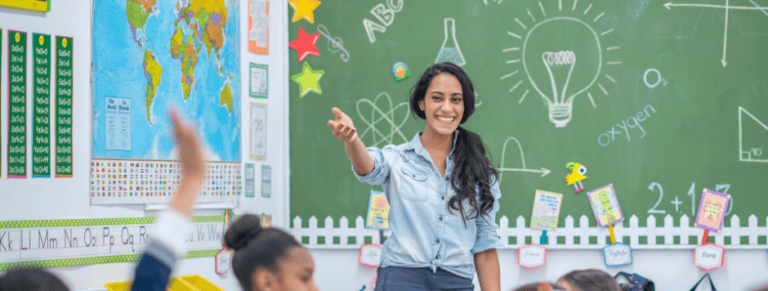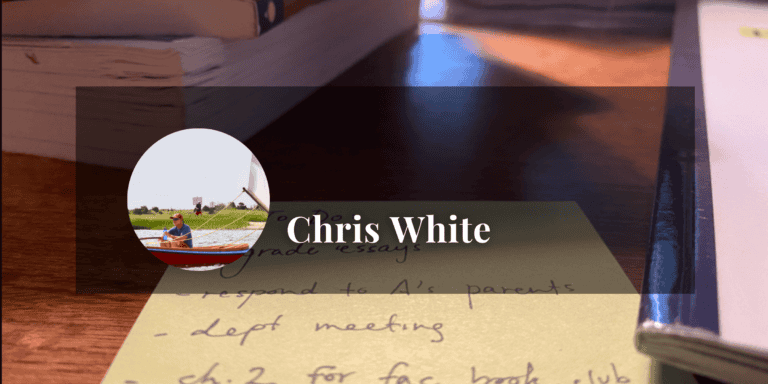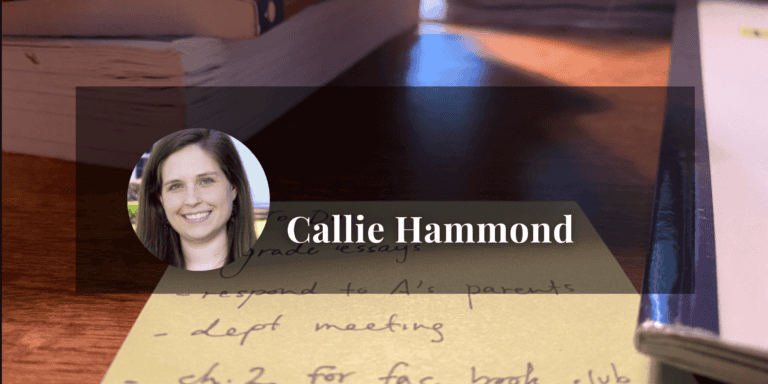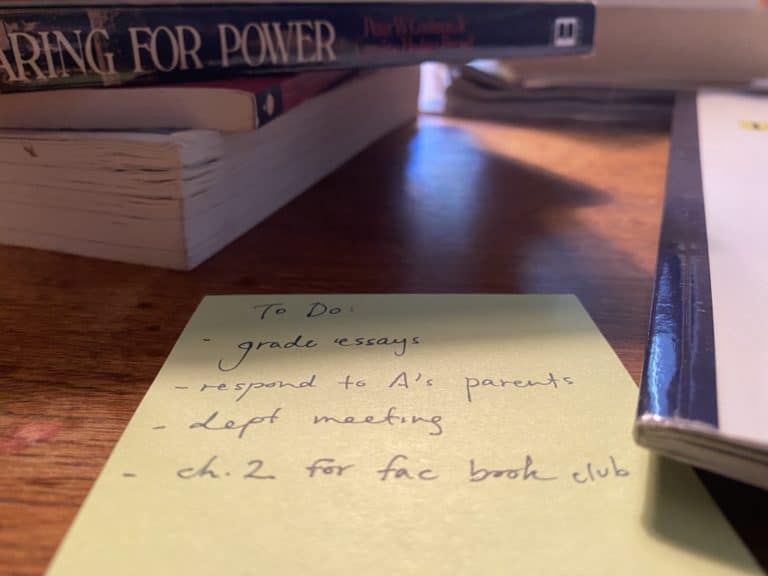Teacher Feature Jessica Wilson, Katherine Hammond, Maggie Haire
Thank you to Jessica Wilson, Katherine Hammond, and Maggie Haire, the fourth grade team at Hutchison School (Memphis, TN), for sharing their R.E.A.L. Basics experience with us! R.E.A.L.® Basics is our research-based discussion skills program for elementary-aged students.

Can you describe yourself as a student in three words?
Jessica: Overachiever, rule-follower… maybe a little anxious. Definitely a people-pleaser too!
Katherine: I’d say I was teachable, creative, and a very visual learner.
Maggie: Total opposite of Jessica. I tried to follow the rules, but didn’t always succeed. I loved learning, was very eager and strong with big-picture thinking—but details overwhelmed me. So…creative, slightly disorganized, and visionary.
Tell us a little bit about why you decided to prioritize teaching communication skills this year.
Jessica: For me, I could explain things all day, and my students seemed like they were listening—but when it came time to write or do a project, they’d say, “I don’t get it.” We’ve learned that when students explain what they are thinking to each other in their own words, when they’re the ones taking ownership of their work and really digging deep, then they’re developing a better understanding of it. So I thought if they can communicate from the get-go better what they’re understanding, instead of me just saying it back and forth to them, then we’re going to see the benefits of that a lot earlier. Teaching communication helps them own their learning earlier.
Katherine: Since COVID, and with kids being behind a screen and on devices more, they’re really having a harder time with that communication. So teaching targeted, face-to-face communication is becoming more important.
Maggie: One thing I’ve noticed in our discussions since implementing R.E.A.L. is how the routines have made some of the classroom discussion dynamics visible. We use hand signals, and students only get to share three times, so even our most talkative students pause and think about whether what they were going to say was really meaningful and whether what they want to share is adding to the conversation and moving it forward. So, it’s helped balance voices and encourage everyone to contribute.
We use hand signals, and students only get to share three times, so even our most talkative students pause and think about whether what they were going to say was really meaningful and whether what they want to share is adding to the conversation and moving it forward. So, it’s helped balance voices and encourage everyone to contribute.
Maggie Haire
Tell us about where you started – which skill did you start with and how did you sequence the mini-lessons?
Maggie: This year, I started with “Ask”. In Social Studies, “asking” lends itself so beautifully to deep conversations. For example, when we were studying Susan B. Anthony, I posed the question, “after learning that Susan B. Anthony felt more strongly about white women’s right to vote over black men’s right to vote, does it change your opinion towards Susan B. Anthony?” I wish I had recorded the discussion! It was so amazing. It was so awesome to hear their responses and to see them really put some thought into it.
It’s funny because throughout the day, for instance in math, they’ll start saying, “do we need to use hand signals?” Because they can tell some people are constantly answering and some people are not. I kind of love that. In my head, I had it that it’s going to work right here in this content area with Social Studies. And with them, they were like, “let’s just use this all day long!” So this year, just for the sake of time, I just kind of jumped into it.
Jessica: That’s where her visionary big picture stuff is – that’s Maggie, she’s like, “I’m jumping into this!” because that’s where her out of the box thinking is. But for me, the rule follower, I was like, at the beginning of the year, I’m gonna do the first lesson, then the second, then the third.
We all three did a novel study at the beginning of the year because we had a guest speaker coming, so I started with the “Relate” lessons and also introduced “Excerpt.” We pulled specific pieces from the text and did those lessons, and we connected it to other things we had read and discussed. We did those beginning lessons, even though the Excerpting lessons happen later on, because these girls have been exposed to it in second and third grades through our other curricula. We felt like they were ready for it, otherwise we wouldn’t have pulled it in. We didn’t have to focus on listening as much; we just reviewed that real fast, and they were ready, so that helped kind of jump start the whole program.
In our Social Studies class, we really leaned into discussion because it lends itself more to that debate-style format. As Katherine was saying earlier, it’s so important to teach them how to communicate in a respectful way, and how to disagree with each other. And even for those hard topics, like Maggie mentioned, these girls have done a really great job respectfully disagreeing and adding on and just really looking at, “what do I want to say? Is it going to be beneficial to this conversation?” So I started following the portfolio at first and then jumped around and adlibbed a little bit.
And even for those hard topics, like Maggie mentioned, these girls have done a really great job respectfully disagreeing and adding on and just really looking at, “what do I want to say? Is it going to be beneficial to this conversation?”
Jessica Wilson
Can you think of a moment this year where a student had a breakthrough and what did it look like?
Jessica: I think our biggest breakthroughs have been in Social Studies this year because our topics in fourth grade have been pretty deep. We were studying abolitionists and suffragists, and now we’re into our unit on influential women – those topics are huge topics for these 10-year-olds to discuss. I remember one of my kids during the Susan B. Anthony discussion was looking at a primary source, and she shared that she didn’t understand why Susan B. Anthony was fighting with Frederick Douglass and was not happy for her friend. And then someone else pointed out something different in the text and read it a different way. They had this really unique discussion and both realized they wanted to learn more about this. Based on their discussion in the text and what we had talked about in class, they went and they did their own research. At first they asked me for answers, but I said, oh, I need to do more research too! So I was getting on my computer to look things up, and I was showing them how to type in the question and look for the information. But then they said, “we want to research too!” I said, go for it, because these are two kids that I could trust to actually research and not look up crazy things. To me, though, that was an aha moment – to see them have that light bulb go off and really have students invested in their own learning.
Maggie: For me, having students tie their response to textual evidence has been so important and instructive. A lot of times they have an opinion or a thought – or sometimes their parents’ opinions or thoughts – but it’s not tied to textual evidence, and they would share it in class. With excerpting, we’ve focused on that skill. And in civil discourse, we’ve focused on how to agree and disagree, how to base your information in evidence, and how to ask respectfully of other students, “what is your source?”
And in civil discourse, we’ve focused on how to agree and disagree, how to base your information in evidence, and how to ask respectfully of other students, “what is your source?”
Maggie Haire
Katherine: I would say for me, the breakthroughs have happened when the girls are able to relate what they’re learning about into bigger picture ideas. When we were doing the “Intro to Relate” with the visiting author’s memoir, they were able to see, “oh I relate to the author because I’ve also gone through something challenging!” And then with the Susan B. Anthony and Frederick Douglass discussion, they realized, “I’ve had disagreements with my friends. Maybe it affected my friendship for a little while, but we were able to ultimately respect each other’s opinions.” So, they’re able to pull in these life experiences with the discussion and relate.
That is really cool to hear! I’m excited to hear how things go as the kids get older and continue having deeper discussion in middle school in a couple of years.
Maggie: I think fourth grade is a great year to kind of nail the introduction to this to the process and the format! I have an eighth grader here, and they use it as well in eighth grade. And I have another daughter who is in college now. The two of them would kind of get into discussions, but all talking at the same time. My eighth grader would then say, “wait, where did you get that? What’s your evidence?” So she definitely enjoys it.
That’s so great! Thank you all so much for sharing – it sounds like it’s been a great year so far with the fourth grade!





